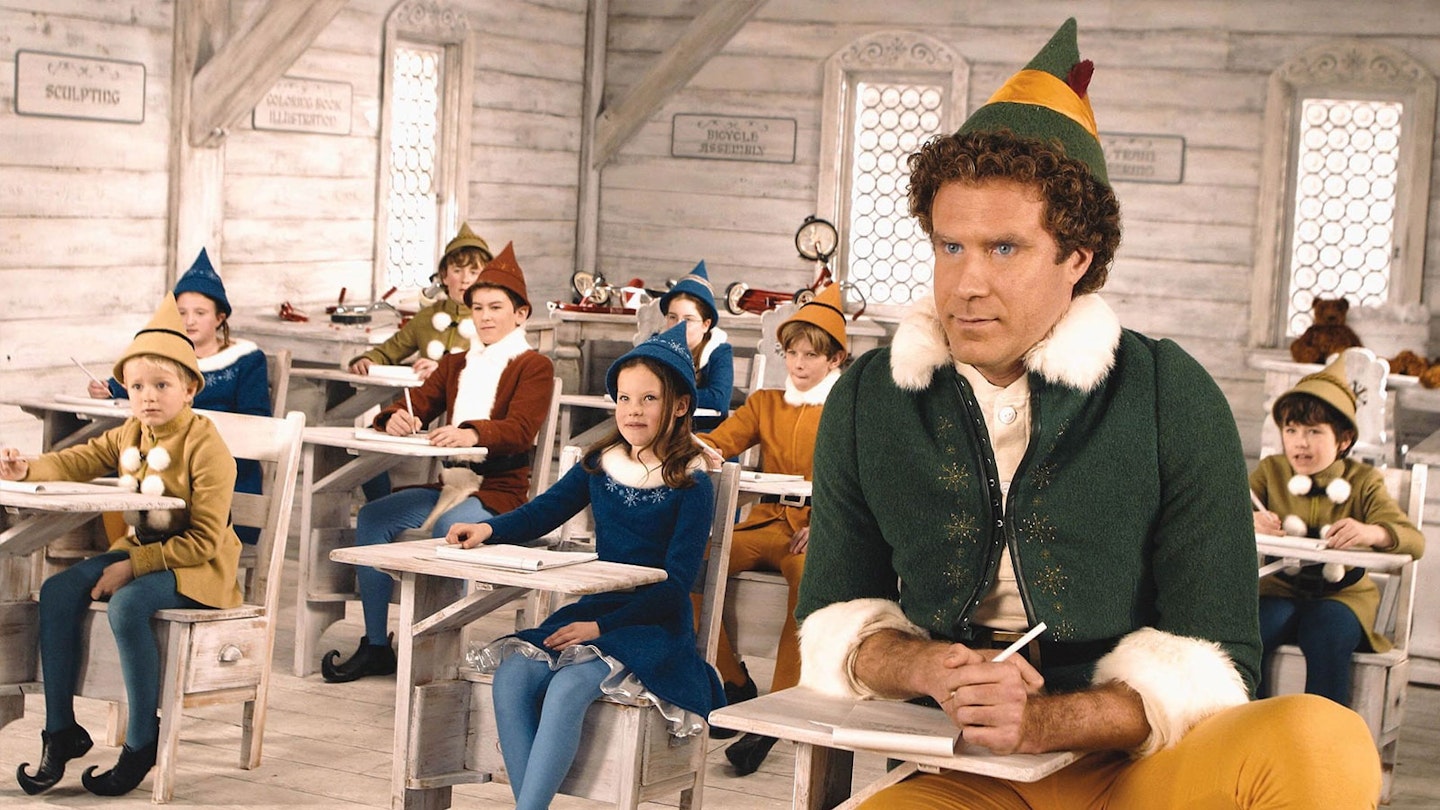When Jon Favreau’s Elf first opened towards the end of 2003, it felt like the kind of Christmas movie that might have a decent shelf-life. It was warm, it was fuzzy, it was funny. That shelf life has proven to be more than decent — in the 18 years since, it’s come to be regarded as a modern classic, filled with memorable moments, from Will Ferrell decrying a department-store Santa to the mother of all snowball fights in Central Park.
But it’s this shot that arguably defines the movie, both in tone and premise. Ferrell — then still Saturday Night Live’s golden boy, tentatively making the breakthrough to the big screen — as Buddy the human elf, squeezes himself into a tiny desk next to Santa’s actual elves (played by children). It’s a study in comedic contrasts and, aptly for the star of Old School, all achieved using the oldest of old-school techniques: forced-perspective. In other words, Ferrell may look like he’s sitting next to those kids, but he’s actually several metres in front of them, with cleverly chosen camera angles doing the rest. “All the techniques I learned about from reading Starlog magazine or Cinefex, I wanted to try them,” Favreau tells Empire. “As for the forced-perspective, we were doing our homework. People didn’t use it a lot. Peter Jackson had for Lord Of The Rings, and Joe Bauer, my visual-effects supervisor, was also very curious about it.”

When Favreau directed Elf, he was still best-known as the purveyor of sharp-witted, foul-mouthed, adult-themed comedies like Swingers and Made, neither of which came within a reindeer’s antler of a special effect. He actually wanted that to largely continue on Elf, at least in the scenes set in the North Pole. “I didn’t want to do any digital work,” he says. He and his team took inspiration from a most unlikely source: one of Sean Connery’s oddest films. “We researched Darby O’Gill And The Little People,” Favreau laughs. The attention to detail was meticulous. “Joe would go in the night before and he would have done all the math, and lined up where the camera was, what the lens would be, tape it off, line everything up, so by the time I came into shoot, we were just adjusting slightly and I was directing the performers. You’re spending a lot of time getting the lighting balance correct, and getting the performers to look like they’re sharing an eyeline, but it was magical.”
So magical, in fact, that it beguiled the legendary Bob Newhart, who was playing Papa Elf. “We had rented this big ice rink [in Vancouver], I think it was, that was closed, so it did not seem like a very professional undertaking,” recalls Favreau. “He was growing a bit impatient with all the things we were doing, but the good thing about forced-perspective is that it’s the final shot that’s in the movie. And I think he got excited about what his grandchildren would think, and started pitching different things they could try.” Turns out the best way to spread Christmas cheer isn’t just singing loud for all to hear. The magic of forced-perspective works just as well.
